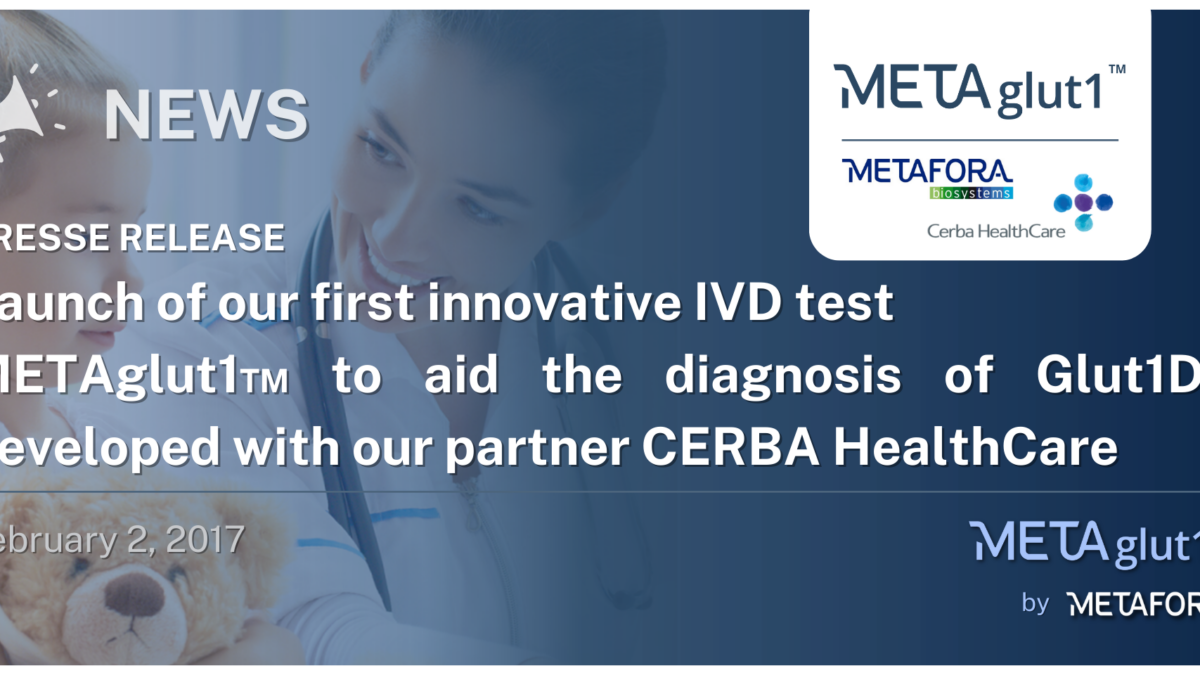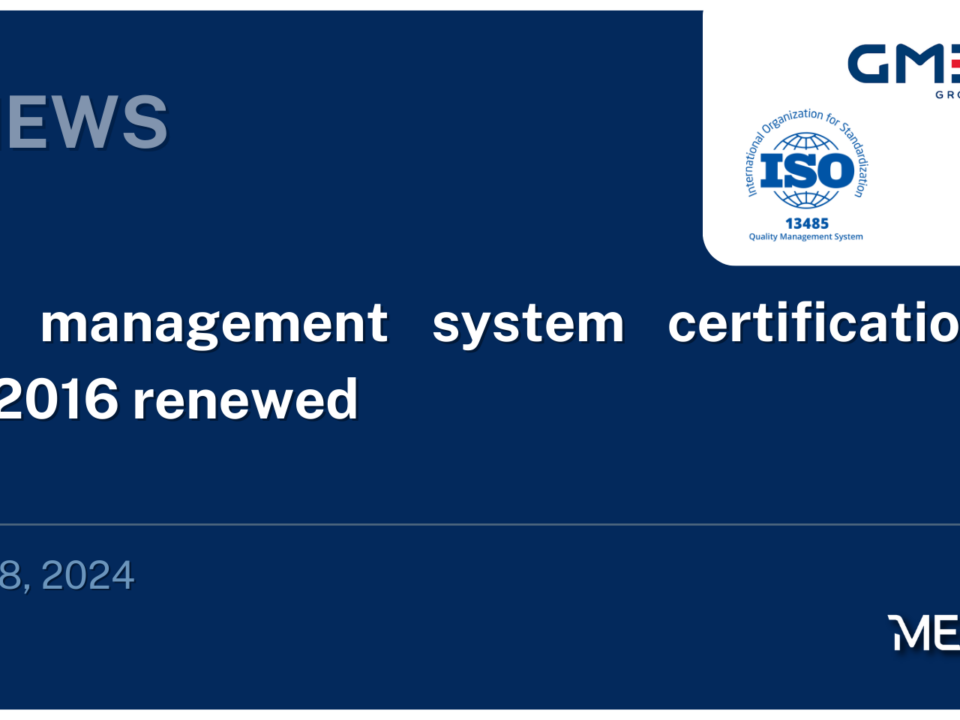
Company milestones shared at the Actionaria Event 2016
November 18, 2016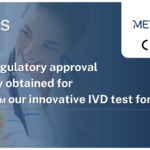
European regulatory approval successfully obtained for METAglut1™ our innovative IVD test for Glut1DS
February 15, 2017Launch of our first innovative IVD test METAglut1™ to aid the diagnosis of Glut1DS developed with our partner CERBA HealthCare

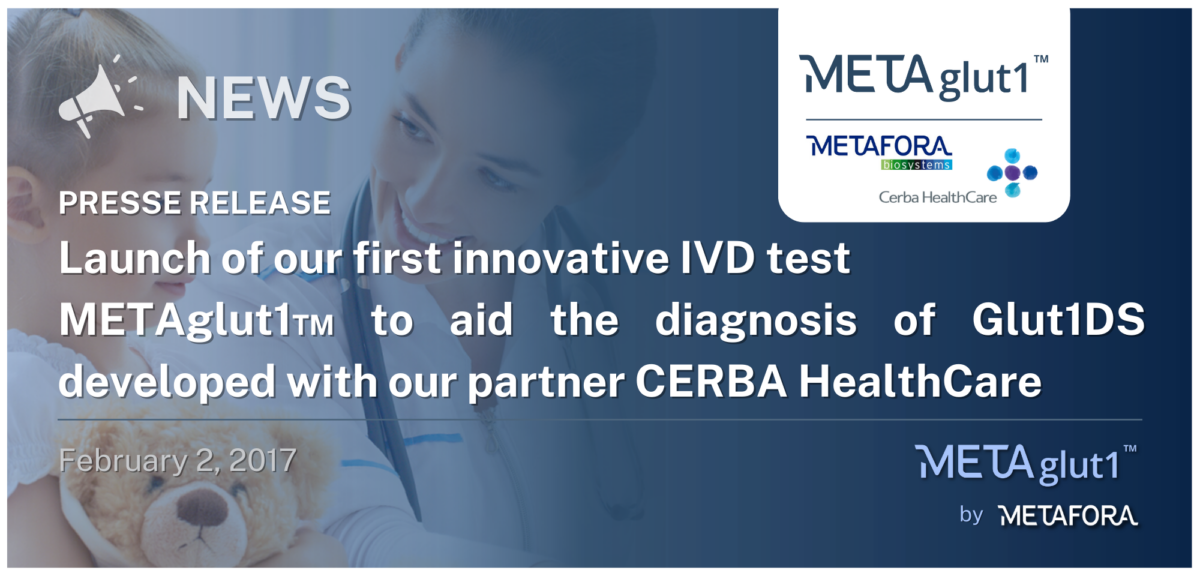
February 2, 2017.
[NEWS] Company ; METAglut1™
We are thrilled to announce a significant milestone following our successful fundraising in Q4 2016: in partnership with CERBA Healthcare, we are now launching METAglut1™.
METAglut1™ is our first IVD blood test designed to aid in the early diagnosis of Glut1 Deficiency Syndrome (Glut1DS), also known as De Vivo Disease. This rare neuro metabolic disorder can have a profound impact on the lives of affected children.
We believe that our diagnostic tool represents a significant advancement in identifying the condition, which can have profound implications for affected individuals and their families.
As we celebrate this achievement, we are also actively pursuing CE marking for the METAglut1 test, which we hope to receive in the coming days. This certification will further validate the test’s safety and efficacy, allowing us to expand its availability and solidify our commitment to improving patient care.
This partnership marks a major step forward in the fight against GLUT1 deficiency syndrome, offering relief to countless patients and their families.
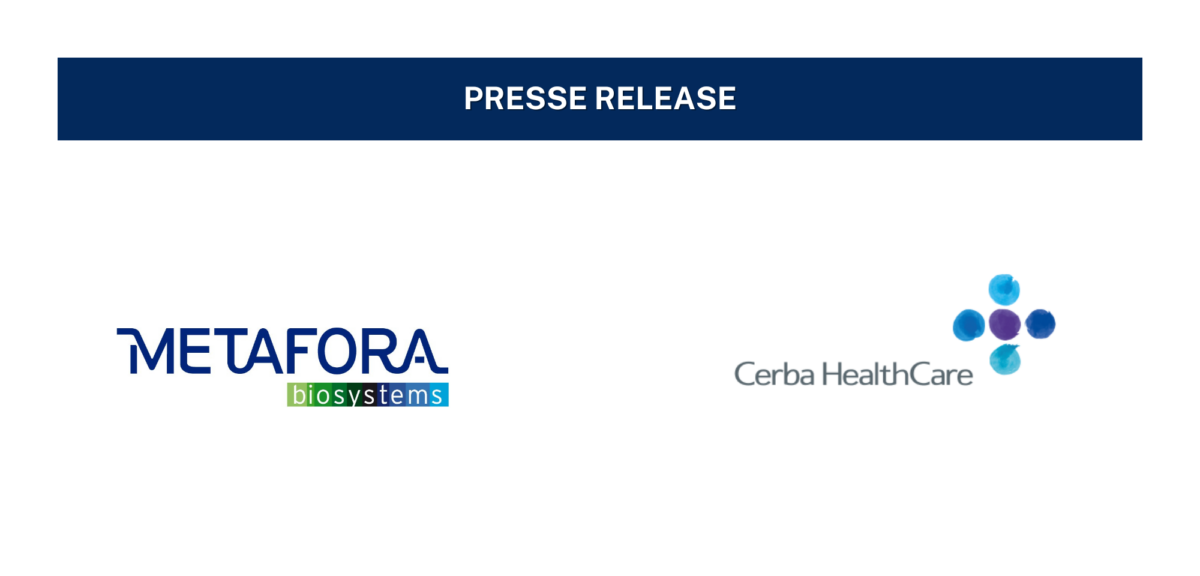
Saint-Ouen l’Aumône and Evry, France – February 02nd, 2017. Laboratoire Cerba and METAFORA biosystems are proud to announce the availability of the innovative test METAglut1 in routine biology to help diagnose the GLUT1 deficiency syndrome (GLUT1-DS)
Laboratoire Cerba will perform the METAglut1 diagnostics test developed by METAFORA for the early non-invasive diagnosis of a debilitating neurological disease, the GLUT1 deficiency syndrome (also named De Vivo disease). This disease which affects mostly children is due to a lack of expression of GLUT1, the major glucose transporter. This metabolic disorder induces a chronic glucose deficiency in the brain and provokes epileptic seizures, movement disorders, learning disabilities and even behavioral difficulties in affected children. The METAglut1 test is a true medical innovation, the first ever diagnostics test to illustrate a dysfunction in cells’ nutrition and was just CE marked at the end of January.
This syndrome belongs to the rare disease group and is thought to be extremely under diagnosed due to the very heterogeneous presentation of symptoms that can even be quite atypical. It is estimated that some thousands of patients are affected by the disease in Europe, of which 90% are not diagnosed to date and therefore endure a dramatic medical wandering.
“Clinical variability of the disease and low awareness induce an important lag in diagnostics. The mean diagnostic age is around 8 years of age although the first clinical signs appear during the first year of life. Patients’ quality of life is significantly improved by an adapted diet. Being able to come up with an early diagnosis is therefore crucial for improving clinical practice in this disease” comments Vincent Petit, co-founder and CEO of METAFORA biosystems.
Today no satisfactory biological method exists to guide or confirm the diagnosis of a GLUT1 deficiency. The functional exploration of the syndrome is complex and requires most of the time a hospitalization to perform a lumbar puncture and to test glucose in the cerebrospinal fluid. On the other hand the analysis of the SLC2A1 gene is lengthy and expensive.
“The test is non-invasive, and is performed using a classic blood sample. It is simple, fast and automated and we shall be able to provide both doctor and patient with a result in 24 hours, very quickly after the first symptoms and a clinical suspicion. This test is meant to save years of diagnosis for patients” points out Jérôme Salette, Chief Innovation and Development Officer at Cerba Healthcare. “We are proud to collaborate with Cerba Healthcare so that our test will be promptly and widely available to the medical community thanks to their large network of laboratories in France but also overseas” adds Vincent Petit.


